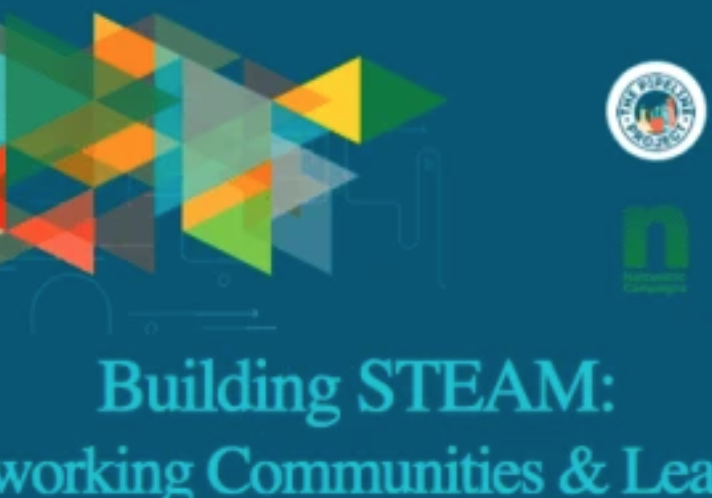
Building STEAM in Atlanta
Network Opportunity Assessment for Arthur M. Blank Family Foundation
The Arthur M. Blank Family Foundation launched its Pipeline Project in 2015 with the goal of increasing the number of low-income, preK-12 students in metro Atlanta demonstrating demand for and proficiency in STEAM subjects. Since that time, the Pipeline Project has reached 86,000 students and 22 grantees through $1.6 million in grants in three counties.
The need for these investments couldn’t be greater.
Understanding of and interest in STEAM subjects positions students for an exploding number of jobs in Atlanta. However, the opportunities for students to study these subjects are low. In addition, the socio-economic disparities in Atlanta give students in many areas of the city an increased disadvantage. In Atlanta, 80 percent of all black children live in communities with high concentrations of poverty, compared with 6 percent of their white peers. This disparity plays out in significant ways in education; while 57 percent of black students graduate from Atlanta Public Schools, the graduation rate for white students is 84 percent. And, the disparities are even more stark in STEAM education. Nationwide, high schools with high numbers of African-American and Latino students are less likely to offer advanced math and science classes.
A challenge as complex and entrenched as this one does not have a simple solution. Instead, it will be dependent on a community of leaders who work together from a variety of angles to transform the system that has created the social, economic and educational barriers preventing students from thriving in STEAM. This is a problem that necessitates a network.
In 2016, the Foundation asked Netcentric Campaigns to conduct a Network Opportunity Assessment (NOA) of the key influencers in Atlanta’s STEAM ecosystem. The assessment sought to answer: (1) Are the existing stakeholders in the network building strong connections through social ties, a common language and shared vision? (2) Does the network draw on diverse and distributed leadership? (3) How effective are the network’s tools, namely the communications grid, feedback mechanisms and shared resources?
What did we do?
Over a period of several months, Netcentric Campaigns conducted 19 interviews, 2 surveys, 1 webinar and a day-long workshop with students, leaders of nonprofits, major corporations, universities, the Georgia Department of Education and foundations. We also conducted landscape research into social media and digital content on the topic in Atlanta and nationwide.
What did we find?
In our report back to the foundation and all the students and adults who participated in the work we found key gaps in the seven elements needed to produce a strong and distributed network in metro Atlanta in the interest of improving underserved students’ access to and demand of STEAM education.
Leaders
Throughout the process, we heard clear feedback that a network needed to be inclusive of and centered around those most impacted by the disparities in STEAM education, particularly girls and minority students from underserved communities. This finding was one important indication that this problem was well suited for a network structure. Our experience with networks shows us that the greatest activity, growth and innovation happens at the edges, not among those who are already well connected and centered in leadership. By applying a network structure to this problem, leaders have the opportunity to connect with those who have been excluded from solutions building previously, such as students from underserved communities. We heard throughout the assessment that these leaders weren’t coming together in a networked context organically.
Connections
The Network Opportunity Assessment also indicated to us that connections, seen by the strength and distribution of social ties, a common vision, and shared language, are lacking among those working to improve STEAM education in Atlanta. The root causes we heard for this lack of connection were multiple and included environmental factors, funding opportunities, and limited resources for nonprofits.
Tools
We also heard that leaders in STEAM education across Atlanta had developed or were working to develop tools that would support a positive network effect, such as a map of all the STEAM programs and activities in the area that would let leaders, parents, and students find opportunities near them and see what other neighborhoods offered. When Netcentric Campaigns assesses the strength and distribution of tools in a network, we focus on three types of tools: those that support an active communications grid, those that provide network members’ ongoing and regular feedback, and those that support active exchanges of skills and resources. In the case of Atlanta, the tools in place are not widely distributed yet, but there are many leaders working to change that, which is a very promising sign for the future strength of the network. Of the three, the communications grid is the one that is weakest currently.
What did we recommend?
After completing the Network Opportunity Assessment, Netcentric Campaigns provided a report and presentation detailing the findings and our recommendations, along with a one-year work plan and three-year roadmap for a network in Metro Atlanta that would support increased coordination and spread of the Seven Elements to the edges of the existing network of leaders advancing STEAM education. The Blank Foundation took the recommendations to their Board to get approval on a three-year strategy to support a network of leaders working toward the goals of the Pipeline Project.
